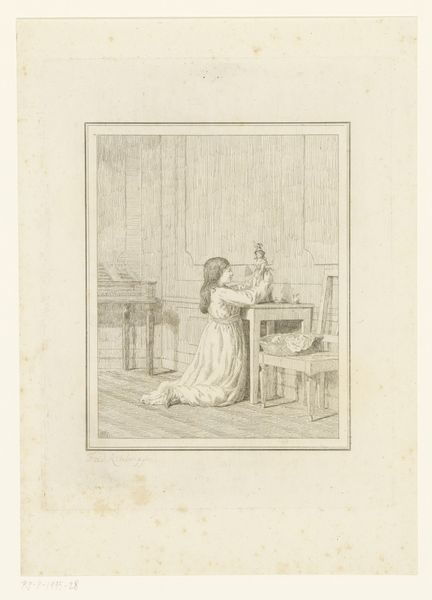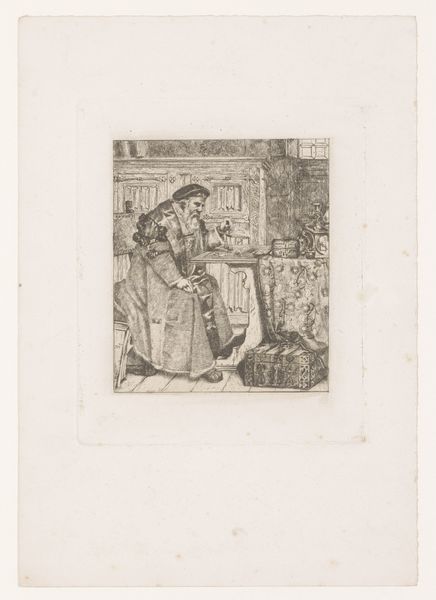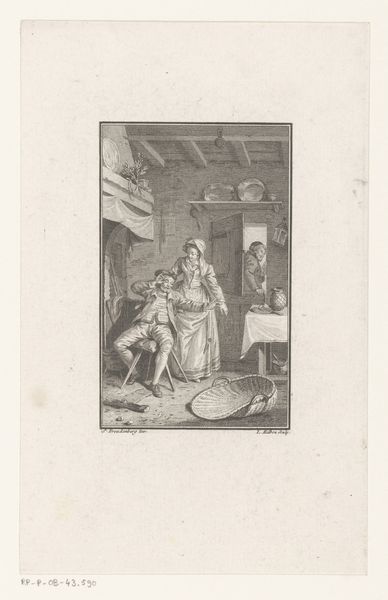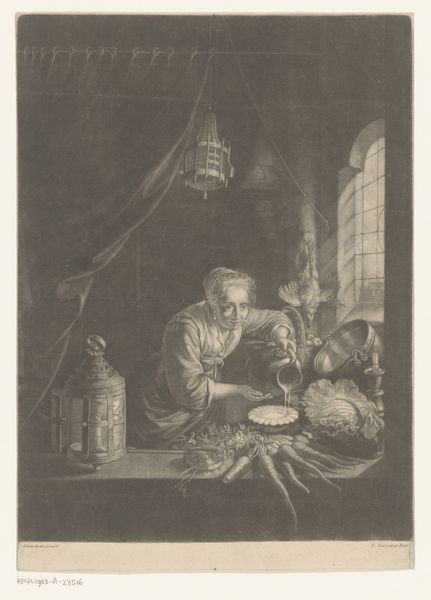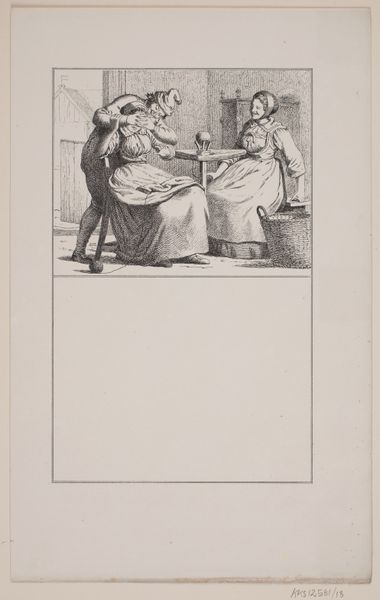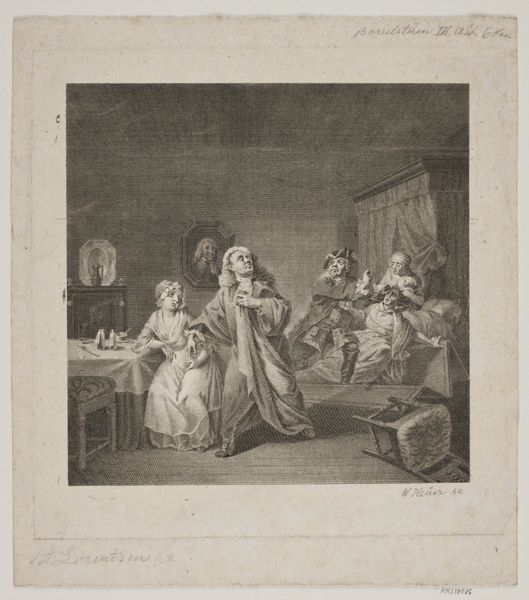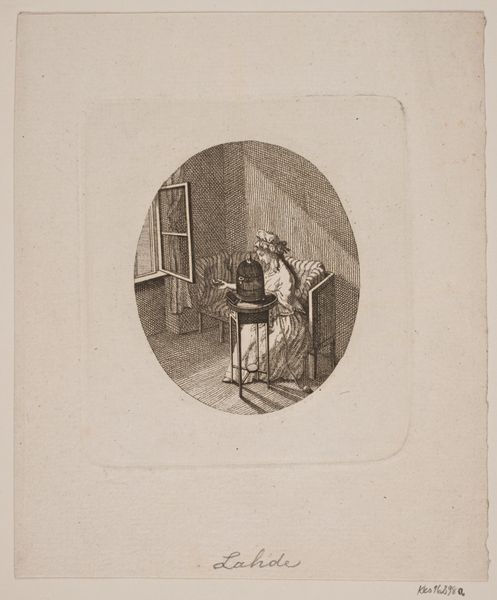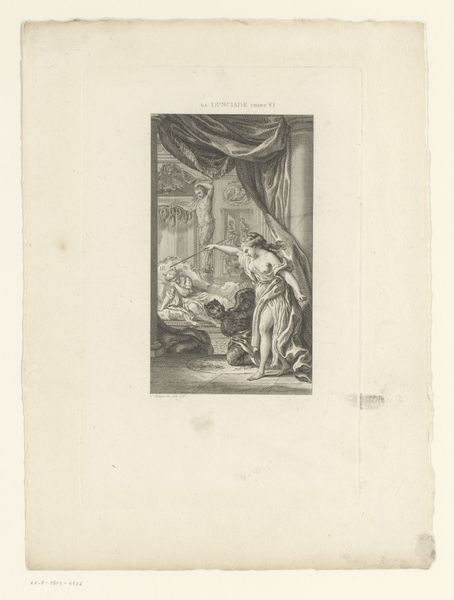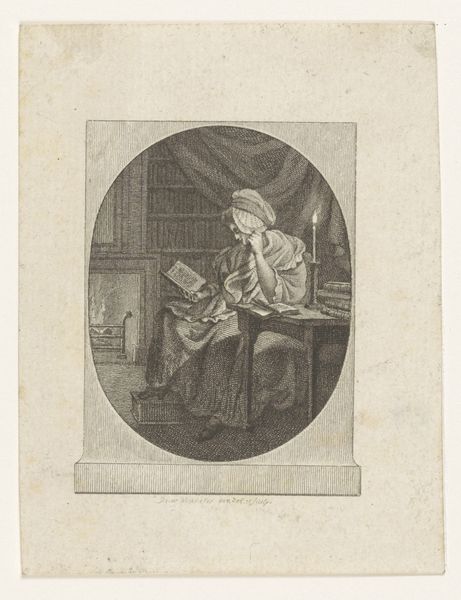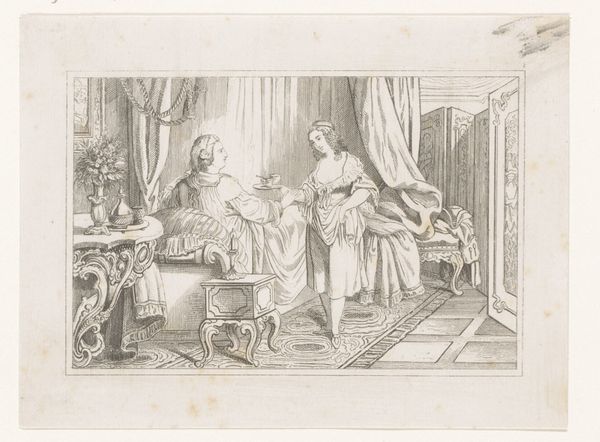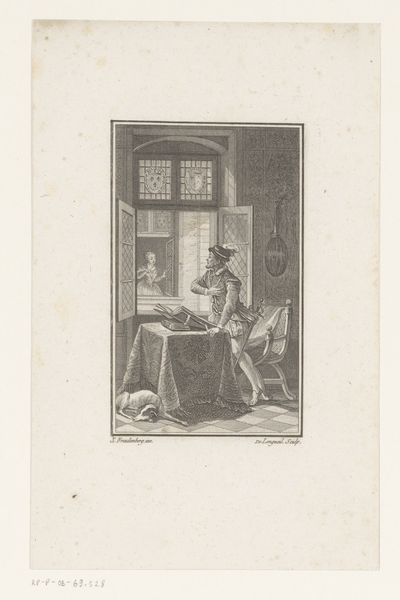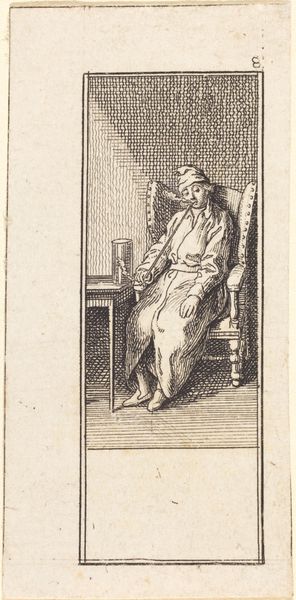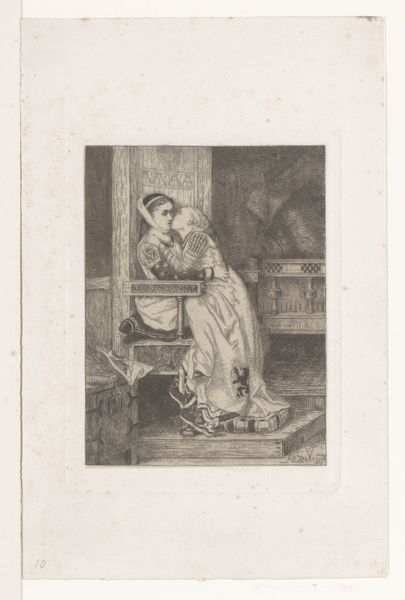
drawing, print, etching
#
portrait
#
drawing
#
baroque
# print
#
etching
#
etching
#
figuration
#
line
#
genre-painting
#
history-painting
#
realism
Dimensions: Sheet: 6 11/16 × 5 15/16 in. (17 × 15.1 cm) Plate: 5 13/16 × 5 1/4 in. (14.8 × 13.4 cm)
Copyright: Public Domain
Curator: We’re now looking at “Woman in the Kitchen,” an 18th-century etching currently held in the Metropolitan Museum of Art’s collection. The print captures a woman at work, a humble scene. Editor: It's striking how immediate the image feels. The dense network of lines creating a real sense of depth and shadow; it feels almost photographic. Curator: It’s important to consider the market for prints like this. They made art accessible. Genre scenes depicting everyday life gained popularity, reflecting the growing merchant class and their interest in representations of their own world. Editor: Right. Etchings allowed for relatively quick reproduction. And look at the depiction of the kitchen tools, the way the light falls on the steaming pot, and reflects in the mortar. It invites us to consider not just the final product, but also the means of production, and, in particular, labor that goes into domestic tasks. Curator: These kinds of images provided visual narratives that upheld certain social hierarchies and expectations. Consider the role of women as homemakers—these prints were circulating widely, reinforcing that expectation. Editor: Precisely, we must remain attentive to the work made by this woman and to its relationship to a larger social and cultural framework of artmaking itself. This image brings into focus that women were, and often remain, in a similar type of position when it comes to the "making" of all kind of art, culinary included. Curator: Indeed, the seemingly simple portrayal hides layers of complex socio-cultural and political underpinnings. The widespread distribution of etchings really shifted the perception and access to the arts during the period. Editor: The level of craft is exceptional. It's really impressive, from an entirely material perspective. Curator: Hopefully this dialogue provided some different lenses to understand the multifaceted image of “Woman in the Kitchen” and the power of prints as reflections of the social norms of their era. Editor: Absolutely. Thinking through the materials, the labor represented, and the modes of its circulation truly deepens our understanding of the piece.
Comments
No comments
Be the first to comment and join the conversation on the ultimate creative platform.
